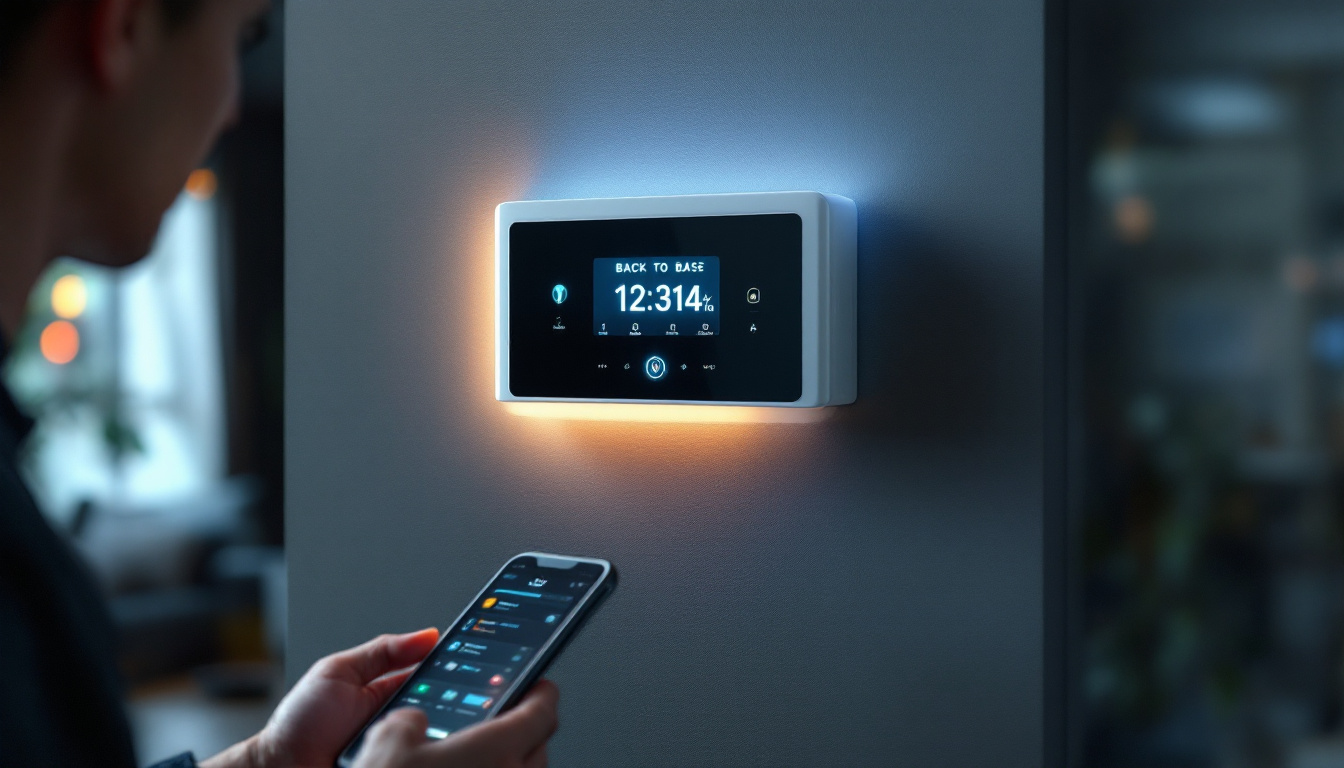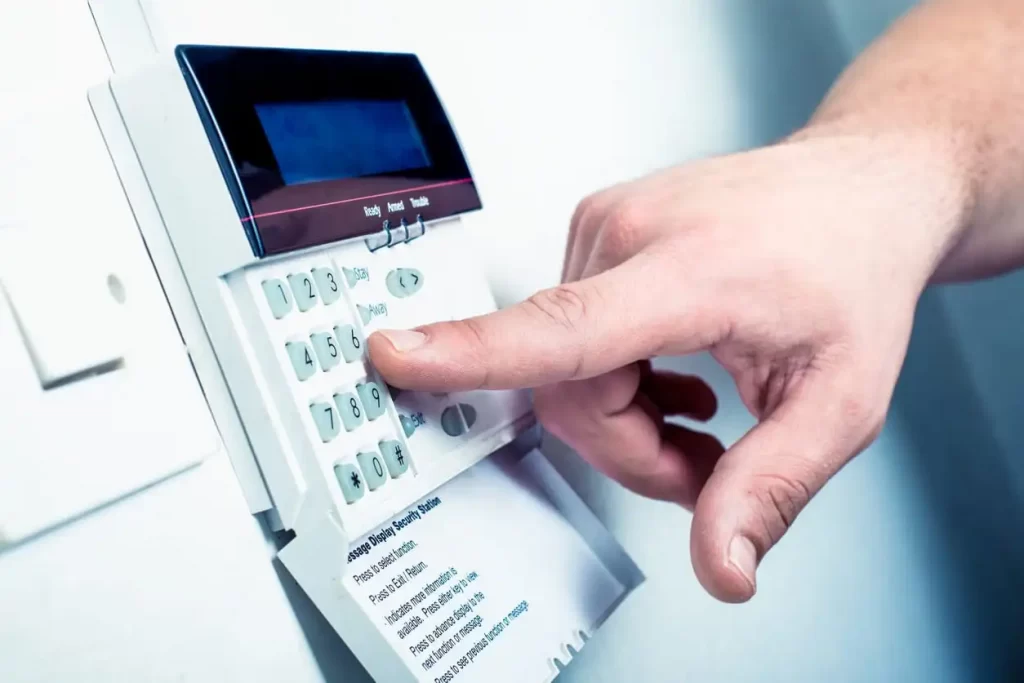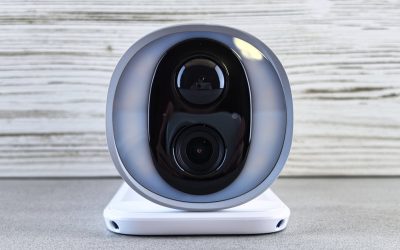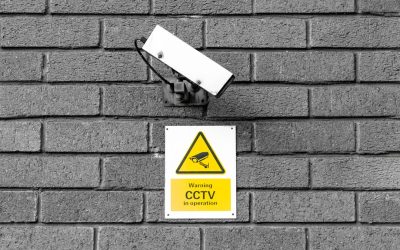Understanding the basics of a back to base alarm
A back to base alarm is a security system designed to alert a remote monitoring centre in the event of an intrusion or other emergency. These alarms provide a vital link between your property and a professional security service, ensuring that help is mobilised swiftly when required. This system is particularly popular among both residential homes and businesses due to its comprehensive nature and effectiveness in deterring crime.
At its core, a back to base alarm operates by sending signals, either through telecommunications or the internet, to a monitoring centre. This ensures that your property is under constant surveillance, allowing for immediate response in the case of a security breach or emergency situation. Understanding how these alarms function is crucial to appreciating their value in safeguarding your property.
The concept behind back to base alarms
The primary concept of back to base alarms revolves around remote security monitoring. When an alarm is triggered, it sends a signal to a designated monitoring centre. This facility is staffed with trained professionals who can assess the situation and determine the necessary action to take, whether that be contacting the authorities or notifying the property owner.
This immediate line of communication significantly enhances the security of homes and businesses. The central premise is not just to trigger a loud siren that might scare off intruders but to alert a professional monitoring service that can, depending on the urgency, take appropriate action swiftly. Furthermore, many monitoring centres operate 24/7, ensuring that your property is protected at all times, day or night. This level of vigilance is particularly reassuring for those who travel frequently or have extended periods away from their homes.
Key components of a back to base alarm system
A typical back to base alarm system consists of several key components, including security alarms. These usually include sensors, control panels, sirens, and communication devices. Each element plays a significant role in the overall effectiveness of the system.
- Sensors: These can be motion detectors, door/window contacts, or other specialised devices designed to detect unauthorised entry.
- Control Panels: The hub of the alarm system, where you can arm or disarm the system and configure settings.
- Sirens: Audible alarms that deter intruders and alert neighbours when triggered.
- Communication Devices: These transmit the alarm signals to the monitoring centre, which can be via telephone lines, cellular networks, or internet connections.
By understanding these components, property owners can make informed decisions about which features are essential for their needs and how best to leverage them for optimum security. Additionally, many modern systems offer integration with smart home technology, allowing users to monitor their properties remotely via smartphone applications. This added convenience means that homeowners can receive real-time alerts and even view live camera feeds, providing peace of mind whether they are at home or away. Moreover, the ability to customise alerts and settings enhances the user experience, making these systems not only effective but also user-friendly.
The benefits of using back to base alarms
The adoption of back to base alarms comes with numerous advantages that enhance the safety and security of your property. These systems are not just about deterrence but also about providing comprehensive protection and peace of mind to homeowners and business operators.
One of the most significant benefits is the unparalleled level of protection that comes from having a system monitored 24/7. In case of an emergency, immediate action can be taken, potentially preventing significant loss or damage.
Enhancing security with back to base alarms
Back to base alarms considerably bolster the security of any premises by acting as a deterrent to would-be intruders. The presence of visible alarms, combined with the knowledge that professional monitoring is in place, often dissuades potential break-ins.
Moreover, back to base alarms can be tailored to meet the specific security needs of different properties. Whether for businesses or households, these systems are designed to cater to diverse criteria based on the level of security required and the unique circumstances of the premises. Prompt alerts to monitoring centres make it viable for law enforcement to respond more quickly than if the alarm was unmonitored or reliant only on the occupants to report incidents. A faster response can mean the difference between disruption and disaster.
Peace of mind for homeowners and businesses
For many homeowners and business operators, the peace of mind that comes from knowing their property is actively monitored by a reputable security company is invaluable. Back to base alarms can assure home security and business security. With the assurance that trained professionals are watching over their assets, individuals can rest easier, whether at home during the night or at work during the day.
Ultimately, investing in a back to base alarm system is not merely about securing physical premises; it’s an investment in personal well-being and the security of one’s family or business operations.
How back to base alarms work
Understanding how back to base alarms function can demystify the technology involved and clarify their importance in enhancing security. The workings of such a system involve precise processes that ensure effective base monitoring and communication.

From the moment an alarm is triggered, a sequence of events unfolds with the purpose of ensuring a rapid and appropriate response.
The process of alarm activation
When an unauthorised entry occurs, the integrated sensors detect the intrusion and activate the alarm. This can be initiated in various ways, including motion detection or the opening of secured doors and windows. Once triggered, the control panel sends a signal to the monitoring centre.
This alert is typically accompanied by data indicating the specific sensor that was activated, allowing the monitoring staff to swiftly assess the situation. Leveraging their expertise in the security industry, they can then reply appropriately based on the information received.
The role of the security monitoring centre
The control room plays a pivotal role in the efficacy of back to base alarms. Staffed around-the-clock, these centres receive alerts from various properties using back to base systems, ensuring constant vigilance.
Upon receiving an alarm notification, the operators assess the information, confirming its validity before taking necessary actions, such as contacting the police or informing the property owner. This system of checks helps reduce false alarms while still providing a vital safety net in real emergencies.
Choosing the right back to base alarm for your needs
When it comes to selecting a back to base alarm, various options are available, each designed to suit different environments and requirements. Comprehensive security services offer personalized solutions and professional monitoring, ensuring immediate responses to security breaches. It’s essential to assess your specific needs before making a purchase to ensure you are equipped with the most suitable system for your property.
Several key factors should be considered when looking for the ideal alarm system, encompassing features, budget, and functionality.
Factors to consider when selecting an alarm system
There are numerous factors to consider when selecting a back to base alarm system, such as:
- Property Size: Larger properties may require more sensors and a more comprehensive system to cover the entire area effectively.
- Type of Property: Residential homes and commercial establishments may have different needs based on their vulnerabilities.
- Ease of Use: Consider how straightforward the system is to operate, especially in an emergency situation.
- Integration with Other Security Systems: An alarm system that works seamlessly with existing CCTV or access control systems can enhance security efforts.
- Base Alarm Monitoring: This 24/7 service provided by security companies ensures continuous monitoring of alarm systems for both homes and businesses, offering features like mobile patrols, incident reporting, and the ability to monitor various types of alarms for comprehensive protection.
Each of these factors will impact both the level of protection your system offers and the overall cost of installation and maintenance.
Tailoring your alarm system to your property
Customisation is key when choosing a back to base alarm. Tailoring a system to the unique characteristics of your property will not only enhance security effectiveness but also ensure that potential vulnerabilities are adequately addressed.
Consulting with security professionals can provide insights into what features are most beneficial based on the specifics of your premises—this might include additional motion sensors, surveillance cameras, or remote access features that allow you to monitor your property via smartphone apps. Additionally, back to base monitoring offers a professional security service that alerts monitoring centers when alarms are triggered, providing 24/7 watch over your security system. This ensures that your property is protected even when you are not present, offering tailored response options based on your individual needs and peace of mind.
Installation and maintenance of back to base alarms
The installation and ongoing maintenance of back to base alarm systems are critical considerations for property owners. Proper installation ensures that all components are correctly positioned and functioning, while regular maintenance guarantees the system remains operational and effective over time. Tailoring the installation and maintenance to the specific security needs of the property is essential to ensure optimal performance and reliability.
When it comes to installation, there are typically two main approaches: professional installation or a DIY method, each with its own advantages and disadvantages.
Professional installation versus DIY
Professional installation is often recommended to ensure that all components of the system are set up correctly. Security professionals possess the expertise to position sensors optimally and minimise the risk of false alarms, as well as ensure that all connections to communication devices are reliable. Additionally, opting for a professional security service provides the benefit of back-to-base monitoring, where alarm systems notify a monitoring center when triggered. This service is available 24/7 and staffed by security professionals, ensuring comprehensive protection for commercial, retail, and residential properties.
Alternatively, DIY installation may appeal to those looking to cut costs or who prefer to handle the installation personally. However, it’s crucial to understand the requirements of the system and ensure that it is installed correctly to avoid potential weaknesses in protection.
Regular maintenance and system checks
Regular maintenance is essential for any security system, including back to base alarms. Property owners should schedule routine checks to ensure that all components, such as sensors and communication devices, are functioning correctly. This not only keeps the system operational but also prevents issues from arising in critical moments.
Many alarm monitoring companies offer maintenance services, which can be beneficial for ensuring that your system remains in top condition. These services often include comprehensive security monitoring, ensuring that your system is continuously checked and any potential issues are promptly addressed. Keeping your alarm system reliable guarantees that you can maintain peace of mind, knowing your property is well protected.










